



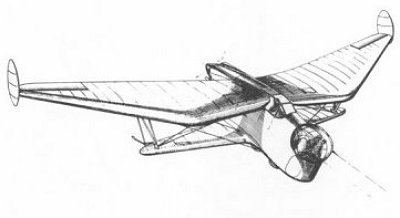 |
Westland-Hill Pterodactyl MkVI |
Specification F5/33 called for a 2 seat fighter aircraft (with font firing station). There were 5 firms who responded to this specification, Armstrong Whitworth was awarded an Air Ministry contract to develop its design serial K5061 was allocated, but the project was cancelled.
The Armstrong Whitworth AW 34 was a two seat turret fighter monoplane with a 47 feet span, and powered by two Armstrong Siddeley Terrier engines.
The Boulton Paul P.76 No details of this project are now available.
The Bristol Type 140. Was a two seat, Perseus-powered pusher fighter, with a nose turret.
The Fairey design. No details of this study are now available.
The Gloster F5/33. Was a two seat aircraft with turret armament, powered by two? Bristol Aquila engines.
The Parnall F5/33. Unfortunately, no drawings or sketches of this project are now available. However, some details are known. It is known to have been a two-seat turret fighter with a hand operated rotatable turret on a tractor layout.
The Westland-Hill Pterodactyl Mk.VI. The Mk.V fighter was to be powered by a 600 hp Goshawk (tractor) engine, and was armed with two fixed Vickers machine guns. The Mk.VI design had a pusher engine and a powered, front-mounted, gun turret. The proposal stated that "the Pterodactyl fighter configuration greatly enlarges the field of view and fire. Powered by an electric motor, the turret has two drives for traverse and elevation.
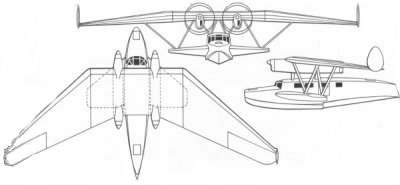 |
Westland-Hill Pterodactyl MkVII |
The Westland-Hill Pterodactyl Mk VII was designed under specification R1/33.
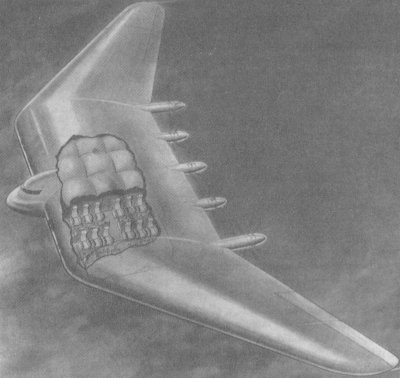 |
Short Bros-Hill Pterodactyl MkVIII |
The Short Bros-Hill Pterodactyl VIII was a progression on the VII & was designed for trans Atlantic airline service after the war. To be powered by 5 R.R. Griffon engines.
 |
Airspeed AS 31 |
The British specification 35/35 was for an experimental high-speed
aircraft with the option of turning it in to an 8-gun fighter, as in the Hurricane &
Spitfire.
There were four firms who replied to this specification the most un-conventional was the Airspeed
A.S.31 which was a tractor monoplane in which the tailplane, on twin metal
booms, carried the pilot in an eggshaped nacelle. No rudder or fin surface was indicated
on the general arrangement drawing. Split flaps were fitted across the trailing edge of
the wing between the booms, with wide-span ailerons outboard of the booms. A widetrack
undercarriage was depicted . The aircraft was to be powered by a Rolls-Royce Merlin E
engine. No details of its potential performance are recorded. Its wing span was 33 ft. and
its length 29.5 ft.
The other contenders were the Bristol 151 single seat monoplane, powered
by a Bristol Hercules engine. Its speed, with 100-octane fuel, was estimated to be 440mph.
The General Aircraft GAL.28 was a single-seat aircraft , powered by a
single Hercules engine, with a wing of variable area. The Hawker design
was a Hurricane variant.
The Specification not proceeded with.
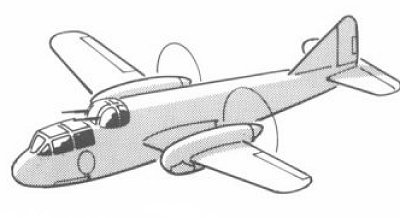 |
Armstrong Whitworth AW?? |
The British Specification F11/37 was for a twin engine, 2 seat fighter
capable of day & night operations, in a fighter or ground support roll.. Armed by 4
20mm canons housed in a power operated turret. The specification called for an aircraft
capable of 370 mph at 15,000 ft, with a service ceiling of 35,000 ft with an endurance of
2.5 hours. The Aircraft was to be armed by 4 20 mm canons with 240 rounds of ammunition
& a single 250 lb bomb carried internally.
Boulton Paul P92 was designed to meet this
specification & it was this company that the contract was awarded to. Serials L9629
& L9632 being allocated to the two prototypes. Heston Aircraft built a half scale
model of the P92, called the P92.2. The serial V3142 was allocated
to the P92.2, which was flown during May 1941. With the cancellation of the P92 project
the P92.2 was stored for some time before eventual scraping.
At the time of Munich Bristol proposed using Hercules engines on a new
aircraft using mainly Beaufort components, this design was eventually called the
Beufighter.
Armstrong Whitworth submitted an unnumbered design, Fairey,
Gloster & Short Bros also submitted designs.
 |
Miles M 39 |
Specification B.11/41 was for a high speed bomber Aircraft capable of
carrying a 4,000 lb bomb load over a range of 1,500 miles at a hight of 30,000 ft. It was
envisaged this aircraft was to be powered by two Sabre (NS8SM) engines or alternatively
Centaurus engines. A of speed up to 450 mph was expected from this design.
Two Hawker P1005 prototypes were ordered in 1941, with serials HV266 and
HV270 allocated, but the order was cancelled on 3/7/42.
Miles offered the Miles M.39 Libellula bomber,
ultimately envisaged as powered by three jet engines.
The De Havilland proposal, originally the De Havilland D.H.99, was
renumbered the De Havilland D.H. 101.
Armstrong Whitworth also undertook a design study.
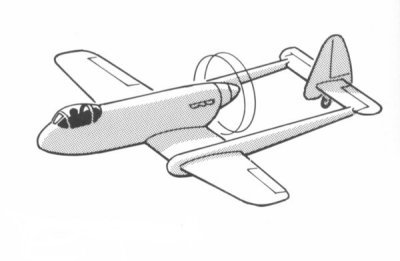 |
Boulton Paul P 99 |
The Boulton Paul P99 submitted against specification F6/42 for a single seat fighter. Also submitted for consideration against F6/42 were the.
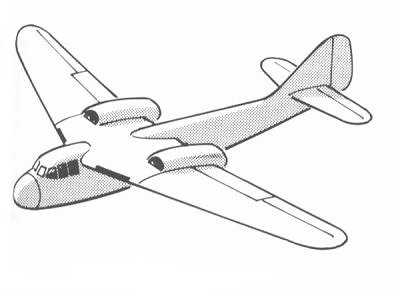 |
Armstrong Whitworth AW 54A |
Specification S.11/43 was for a naval reconnaissance aircraft. The specification called
for the design and construction of a twin-engine reconnaissance aircraft for visual and
photographic reconnaissance and shadowing, by day or night. The aircraft was to have a
maximum all up weight of 24,000 lb. Height (stowed) 17 ft., 1ength 45 ft., Span (spread)
60 ft., Span (folded) 20 ft. Power wing folding was also required.The contract to produce
the aircraft to this specification went to Short Bros for their S38
Sturgeon.
A contract was issued on 12/2/44 for 3 prototypes, with serials RK787, RK791 & RK794.
The first Short SA.I Sturgeon I RK787 flew at Rochester Airport on 7/6/46. The second, RK791, flew from Sydenham on 18/5/48, A third, RK794, was modified to
a Mk.2 with a new serial, VR363.
Other manufacturers in contention were Armstrong Whitworth with its Armstrong Whitworth A.W.54
and A.W 54A, Westland with design studies utilising
either H. I turbojet or Pratt and Whitney radial engines, and an unnumbered Supermarine
project.
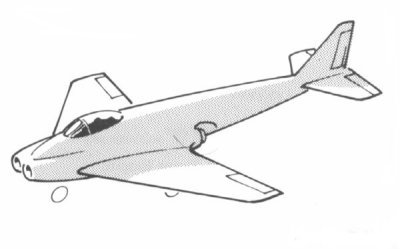 |
Hawker P1054 |
Specification F 43/46 was for a high altitude day fighter capable of 547
knots at 45,000 ft. The specification mentions the possibility of serial production of 600
aircraft at the rate of 20 a month. The aircraft was to be armed with either a pair of
30-mm canon or four .5 in guns.
Gloster submitted 3 designs to this specification, the Gloster P234, P248 &
P250 and Hawker one, the Hawker P1054.
This specification was eventually superseded by F4/48. Which led to the GLOSTER
P276 (GA5 Javelin), and the De Havilland DH110 (Sea Vixen).
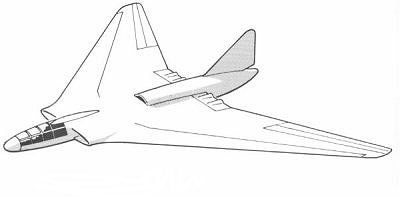 |
Armstrong Whitworth AW 56 |
Specification B.35/46 was for a 4 or 6 engine turbojet, high altitude medium range
bomber. This aircraft was to be capable of carrying a single 10,000 lb bomb or a total of
20,000 lbs. over a range of 1,500 nautical miles. The aircraft was to be capable of, A
high cruising speed, A high cruising height, Manoeuvrability at high speed and high
altitude, A capacity for carrying adequate warning devices & A capacity for carrying
defensive apparatus. A crew of 4 was envisaged 2 pilots, 2 systems operators.
There were 7 firms who responded to this specification, little is known of the
Armstrong Whitworth AW 56 design or the one from Vickers.
Avro responded with the Type 698 delta-wing design powered by four Bristol
Olympus turbojets.
Bristol submitted a Type 172 design of 100-ft span, powered by four 9,000
lb ST turbojets.
English Electric response was a high-wing unarmed aircraft, with a
long-range variant to meet OR-230, and powered by six Napier or AS 4,800 lb ST turbojets.
Handley Page tendered their revised HP 80 design with its "crescent'
wings and all moving tailplane set high on the fin powered by four Metrovick P.9 7,000 lb
ST turbojets.Short Bros tendered the PD. 1 design
with a high swept wing of long chord and with an area-ruled fuselage.
The Vickers design led to the Vickers Valiant via specification B9/48.
The Avro & Handley Page designs led to the Vulcan & Victor bombers respectively
via specification B35/46 (issue 2).
 |
Short Bros PD 13 |
The Short Bros PD 13 was the Short Bros company entry into the NA 39 naval strike bomber competition to specification M 148T. The winner to this competition was the Blackburn Buccaneer.
PD 13 details.
Any Comments or additions please feel free to e-mail me.
This page was last edited on 04/01/99